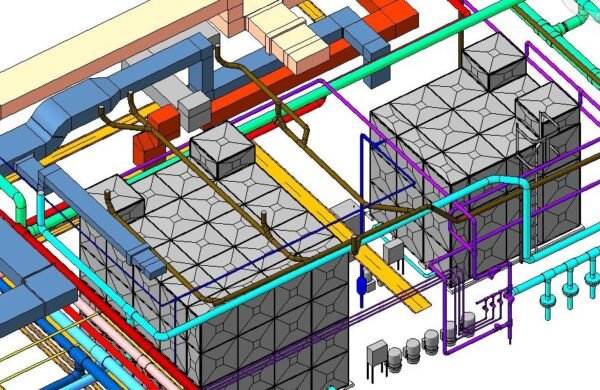What is one thing modern architects and designers are giving up entirely? The answer is mechanical drawing and drafting skills. It is no doubt the 21st century, and we are living and breathing technology. Digitalization and software skills are ruling the roost for efficiency and adaptability.
However, what any good architect or senior associate with let you know is that communication is the bedrock of your design, apart from the foundations that you draw for your building of course. As young mechanical artists, most of the students have rarely, if ever drawn by hand. Computer and iPads having drawing and visualization software and versatile stylus have made it even easier to have designed on your digital fingertips.
What we have to consider as emerging Architects is that without hand drafting skills and practice, one is missing out on the tactile education that integrates design, elevations, angles and visualization skills into our subconscious mind.
Picture a scenario where you are in a meeting with a potential client in the Mechanical Design outsourcing company you work in. They have an idea in mind while you have some modification in your head, and both of you need to communicate the visual aspects of the design to reach a middle ground. And most of all, this is a crucial point where you can gain your client’s trust in your designing aptitude and eye for detail. In such a situation, you can quickly sketch out a draft of the visual in your head, giving a view from 2-3 angles, detailing the important components that the client was trying to understand, and negotiating all minor changes in the design that pops up on both your and the client’s head while looking at the sketch. This is not something you could have achieved with a moment’s notice on mechanical design software. Nor is it something that software can reproduce to give you credibility and value in your client’s eye. Your individuality and visualization power stand out when you draft a design by hand.
The Drawback in Computer-Aided Mechanical Designing
A computer can never replace the raw conceptualization and communication that an architect can render by hand. A computer-aided program like AutoCAD or mechanical CAD design services does make the design workflow easier and more detailed, but it makes the architect lose out on their integral drawing skill. Since any computer-aided mechanical drafting software can make it easy to integrate changes or load templates, it is easy to give in to the comfort of not having to conceptualize and draw a design by hand. The designer loses their credibility.
Hand drafting is one of the quickest and surest ways to learn line drawing, understand perspectives, scale and establish a meaningful relationship with the creation you made on paper. Drawing by hand, feeling the hand flow around the paper, giving angles, shading, appreciating the space and scale without the luxury of scrolling out of frame. None of these is possible with computer-aided designing.
Emerging Architects and young intern architects should learn to appreciate and comprehend the basics that go into the building of a whole project. Starting small from drawing and understanding sectional drawings, elevations and sketching to pen down ideas is a great way to integrate design principles into the mind. Have you ever noticed how engineers or architects tend to draw at the back of an envelop or the back of the rough paper to explain small designs or concepts to others? This just shows how natural it feels to the brain to communicate design by hand.
One of the most important skills one needs in this trade is the ability to solve problems. When working in teams and peers, a young architect might not be able to develop their comprehension and conveying skills like their previous generation of architects. What computer-aided drafting software might not teach you is how to look at any object and instantly visualize and render it from all sides, elevations, sections and details.
Reasons why Mechanical Drafting is Important
Not just the technical skill of being able to draft mechanical drawings, engineers and architects are also taught communication of concepts by hand. Here is a breakdown of the technical and psychological reasons that drawing by hand should continue being an important part of the learning curve for young interns and emerging architects:
- Sketching/Drafting is a form of graphical representation that teach skills and service needs that are not developed when using computer-aided drafting entirely
- Drawing/Drafting is still the most preferred form of representing external data by senior associates and architects. The reason for it can be further understood as:
- Diagrams preserve geographical and topographical information. It allows us to easily index and labels information that can help in the computation process
- Mechanical drafts are able to group multiple subgroups of information into a single diagram and visual. It helps to understand the correlation of elements in the drawing and knowing how it will join to form the larger picture after computerization instead of leaving it entirely on the software itself.
- Diagrams can use a large amount of perceptual information, that cannot be understood in detail if rendered directly on the software
- Drawing is a basic cognitive capability that an architect requires for mental stimulation, representation of data that he sees on a daily basis, externalizing the visual imagery that pops up in their mind when asked to think up solutions to a construction project.
- Mechanical drafting is required so that an architect can render the idea in their head to an external memory medium too. Transforming hand-drawn drafts into CAD design requires one to know the basics of how line drawing and scaling works. The cognitive skills or process underuse when drawing a line by hand is different than rendering a line on AutoCAD or other drafting software.
- Mechanical Drafting showcases the concept and cognitive ability of an architect, which is independent of their drawing’s characteristics. It builds trust in themselves and their clients when they can determine the design features required to bring an idea to life on paper, or later on a mechanical drafting software.
In conclusion
There is evidence in the research done, the experience and success stories of senior architects and designers, as well as in cognitive psychology that drawing by hand is important in shaping a sound, skillful and ready-to-take-on-challenges architect.
Drawings have always been the ideal way of representing data and components in any building or design process. And it cannot be denied that it plays an important role in the design process.
Mechanical drawings are the window to an Architect’s soul. It forms the basis of their problem-solving abilities and their communication powers. No matter how technology eases life ahead, any upcoming architect needs to be grounded to their roots of handmade mechanical drawings.
To know more about Construction Drawings, As-built drawings, their types, and uses, read our other blogs for the same. And if you have an upcoming construction project that you want to be streamlined, Contact us at Monarch Innovation. Our suite of BIM solutions and our professional team of Engineers and Designers will take on the challenge and deliver it within your desired budget.





